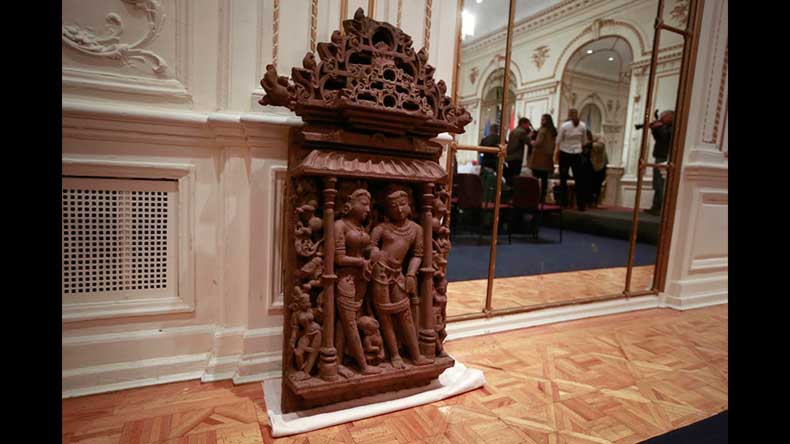In March 2015, the University of Chicago organised a conference in New Delhi titled, “The Past for Sale: Protecting India’s Cultural Heritage”. Scholars, archaeologists, historians
While global experts got together to discuss this deep-rooted plunder of India’s heritage, there was one group of people conspicuous by their absence, the Indian Ministry of Culture, or for that matter, any of its agencies (the Archaeological Survey of India, National Museum, etc).
On the one hand, it may seem bizarre that global experts convened in Delhi, but our officials couldn’t find the time to join them. On the other hand, in a resource-constrained country like India, one could argue that heritage theft is not a serious enough challenge. One could hypothesise that the government has other “more important” priorities.
A HYPOTHESIS WORTH TESTING
UNESCO estimates that 50,000 idols and artefacts had been stolen out of India till 1989. Advocacy group Global Financial Integrity estimates that the illegal trade of arts and artefacts is worth Rs 40,000 crore a year. As an example, a single sandstone sculpture stolen from Madhya Pradesh was worth Rs 100 crore in the international market.
These are not isolated incidents though. India has lost thousands of heritage objects to the international heritage-mafia. Idols, maps, manuscripts, paintings, murals, etc., are looted en-masse and find their way to New York, London, Zurich and other “playgrounds for the rich”.
India has the dubious distinction of being one of the biggest victims to this trade—a self-denigrating victim, which has, for long, allowed perpetrators to loot our heritage. However, awareness of this rare, even disgraceful, honour is missing in most Indians’ minds. In one word, there’s the problem—apathy.
IT’S NOT JUST ABOUT THE MONEY, HONEY
In February 2015, the United Nations Security Council (UNSC) expressed its concern that the Islamic State (ISIS) “are generating income from engaging directly or indirectly in the looting and smuggling in cultural heritage items (…) to support their recruitment efforts and strengthen their operational capability to organize and carry out terrorist attacks”.
As a response, the UNSC adopted its Resolution 2199, formally recognising art and antiquities trafficking as a terrorist financing tool.
In August 2015, the Federal Bureau of Investigation (FBI) issued an advisory stating, “Purchasing an object looted and/or sold by the Islamic State may provide financial support to a terrorist organization and could be prosecuted under 18 USC 233A.”
German Commissioner for Culture (Deputy Minister) Monika Grütters, made a public statement earlier this year, stating she is working towards curbing such financing by pushing for stricter regulations on artefacts entering Germany. She made it a point to emphasise to the international community, “We must act against this trade.”
Interpol has a dedicated Art-Crimes Wing based in Lyon, France. They have an enviable database of about 50,000 stolen heritage objects. Enforcement authorities across the world use this database on a regular basis to track and recover stolen heritage.
India unfortunately, neither contributes to this database, nor leverages it to track heritage-crimes.
Read Also: India needs to bring heritage-criminals to justice
BOMBS FOR GANESHAS
While most of these responses and sanctions were directed towards curbing terror-funding, we must not forget that the heritage-mafia is a globally networked ecosystem. It really does not matter if an artefact was looted from Cambodia, Egypt or India. Most of these looted-objects share the same shipping-agents, trade-routes, hawala agents, auction-houses and art-dealers.
It is an intricate network of regenerative tentacles, where one tentacle feeds the other. When you cut one off, another grows in its place.
The only way out is to have an impenetrable defence mechanism. The only way is to enforce, with an iron hand, when any such perpetrators are caught.
If we don’t, then as the United Nations says, we should be ready for our heritage to be sold, for bombs to be bought.
(To be continued: In the concluding part tomorrow, we will discuss a comprehensive strategic response to the threat of heritage-destruction.)
Anuraag Saxena is based in Singapore. He is passionate about Indian heritage and culinary history, and leads India Pride Project (www.ipp.org.in). He tweets at @anuraag_saxena

